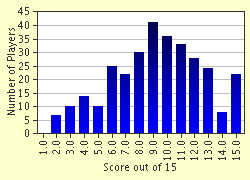Quiz Answer Key and Fun Facts
1. It seems fitting that we begin in Greece, home of the mythical Muses. The Greek courtesan Phryne (Mnesarete) was apparently one of the most beautiful women of all time. On trial for her life at one point for profaning the Eleusinian mysteries, her lawyer won her case by tearing open her robe and exposing her breasts to the jury. She inspired not one, but two great artists of her time- the painter Apelles and the sculptor Praxiteles, to portray her as this Greek goddess.
2. Beatrice Portinari is probably the most famous literary innamorata of all time. Which great Italian poet, who first met her in Florence when he was nine years old, did she unwittingly inspire?
3. Some have speculated that this woman may have been entirely fictional, others that she was the 19 year-old wife of Hugues de Sade (hopefully not an ancestor of the famous Marquis). Fictional or not, all we know of her is that her name was Laura and that she was the beloved ideal of this Italian poet.
4. Simonetta Catteano died tragically at the tender age of 20 in 1476. She had been the child bride of the nobleman Marco Vespucci, but her beauty attracted the attention of others, including the men of the great Medici family. Giuliano Medici commissioned a famous Italian painter to paint her likeness on a banner he would use in a joust. Her innocent, fresh beauty haunted the artist who, ten years after her death, would immortalize her in his famous painting of Venus and as the central figure in his "Primavera". He would portray her a second time as Venus, this time in the company of her husband Mars, and would also portray her as the Madonna in several paintings. Which artist was he?
5. This Italian noblewoman, the subject of possibly the most famous painting in history, was the wife of Florentine merchant Francesco Gioconda, who commissioned one of the greatest Italian artists of the time to paint her portrait. According to legend, the lady in question was mourning the recent death of a child during her sittings. To get her to smile, clowns were hired to entertain her, but the best they could produce was the pensive, enigmatic smile which has intrigued people who have viewed her portrait ever since. What artist did she sit for?
6. Hendrickje Stoeffels was not a classic beauty. She entered the household of Holland's most celebrated painter as a servant and housekeeper. The artist, whose wife had died four years earlier of tuberculosis, had left him alone with a son. Hendrickje took care of the little boy and ran her master's household quite efficiently. Eventually, they became lovers, but he could not marry her without losing the income from his late wife's estate. When she bore him a daughter, he made a legal arrangement with her and they continued to live as common-law husband and wife until she tragically died, also of tuberculosis, in 1667. Her artist-lover portrayed her as Bathsheba, as the goddesses Juno and Flora, and in the memorable "A Woman Bathing". Which artist was he?
7. Cayetana, the Duchess d'Alba, was a wealthy socialite in 18th century Spain. Although married, she had numerous lovers, including this legendary Spanish painter who immortalized her in the twin paintings "La Maja Vestida" and "La Maja Desnuda" ("Naked Maja" and "Clothed Maja"), both of which currently hang in the Prado, as well as a formal portrait which hangs in the New York Museum. Who was her famous artist-lover?
8. Although it is impossible to know for sure the true identity of this legendary German composer's "Immortal Beloved", some believe the singer Amalie Sebald to be the likeliest candidate.
9. Marie Alphonsine du Plessis ran away from a life of wretched poverty determined to live the good life in Paris. As one of Paris' leading courtesans, she was the innamorata of a number of prominent men, notably the composer Franz Liszt and this young French author, whose career has been overshadowed by that of his more celebrated father. Marie's life and early death from consumption were immortalized in his novel "La Dame aux Camellias", which later became a play and, still later, the opera "La Traviata" by Giuseppe Verdi. Who was the love-struck young author?
10. Lady Jane Ellenborough, whose list of lovers included King Louis I of Bavaria and his son, King Otto of Greece, had already achieved fame and notoriety in her own right before this great French novelist, yet another of her conquests, immortalized her as the adventuress Lady Arabella Dudley in his novel "La Comedie Humaine".
11. Harriet Smithson was an Irish-born actress. While on tour with an English Shakespearean company, she became the object of this French composer's romantic obsession when he saw her as Ophelia. She was initially, and understandably, quite alarmed at the violence of his ardor (he once threatened to swallow poison if she would not marry him) but she eventually accepted his proposal. The result was one of the more disastrous chapters in the history of matrimony. Which composer was Harriet's suitor and eventual husband?
12. Virginia Clemm, the child bride of this celebrated American author and poet was also his cousin. They married when she was fourteen and he was twenty-six, but are believed not to have had sexual relations until she was sixteen. Their marriage lasted just over ten years before Virginia succumbed to tuberculosis in 1847. After her death, her distraught husband memorialized her in some of his most memorable poems. Who was he?
13. Neither the frail, consumptive Virginia nor the similarly delicate Marie Duplessis would have appealed to this French impressionist artist, who resembled his predecessor Rubens in his prediliction for healthy, cushiony women. He first fell in love with his future wife, the plump, fair-skinned, strawberry-blonde Alice Charigat, while observing her put away a dish of beans cooked with bacon; his first depiction of her is in "The Luncheon of the Boating Party". In this remarkable painting, nearly everyone seems to be gazing longingly at someone who's attention, in turn, is absorbed by someone else. All except Alice; her attention is devoted entirely to her little grey terrier. After their marriage, her artist husband depicted her as an ample nursing mother, suckling a plump baby boy in "Maternity" (a.k.a. "Feeding"). Who was Alice's artist husband?
14. Our next muse is somewhat off the beaten path. The former Anna Matilda Mc Neill was twenty years old when she fell in love with a dashing young army cadet. She was heartbroken when he fell in love with, and married, her pretty, vivacious friend Mary Swift. A magnamonous person, she remained friends with Mary and was genuinely devastated by her untimely death seven years later. Aware of Anna's feelings for her husband, Mary suggested on her deathbed that, if he married again, it should be to Anna. Some years later, he and Anna did marry and she bore him five sons, the oldest of whom displayed a marked artistic talent which Anna encouraged. He became one of America's most celebrated artists, his best known work (and one of the most recognizable paintings in history) being a portrait of Anna herself which currently hangs in the Musee d'Orsay in Paris.
15. When farm girl Marie Prin came to Paris in 1924, her unspoiled beauty and voluptous figure caught the eye of sculptor Moise Kisling, who made the sixteen year-old his model. Other great artists followed suit and soon Kiki, as she became known, modeled for such artists as Utrillo, Soutine, and Toulouse Lautrec. At the height of her carreer, she became known as the Venus of Montparnasse. Perhaps the best-known image of her is the photogaph "Le Violon D'Ingres" which depicts her nude back as a violin. This remarkable photograph, as well as others of "Kiki", was taken by a famous 20th century artist-photographer with which she had a six year romance. Who was he?
Source: Author
jouen58
This quiz was reviewed by FunTrivia editor
DakotaNorth before going online.
Any errors found in FunTrivia content are routinely corrected through our feedback system.

